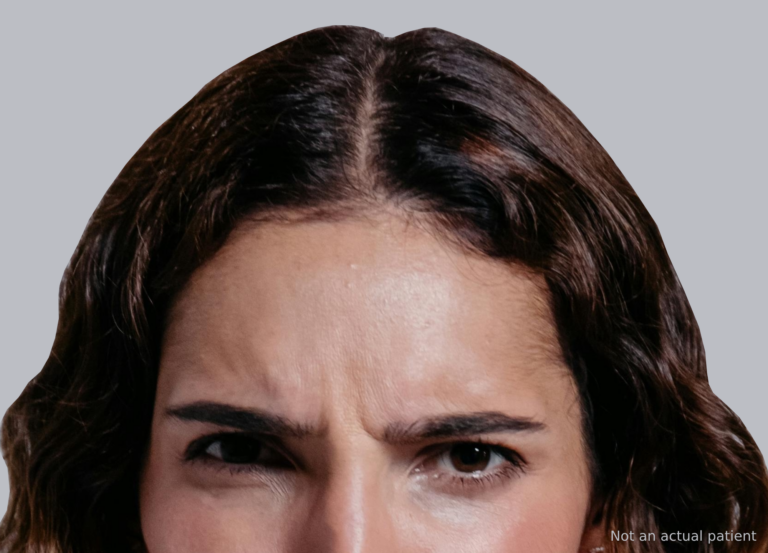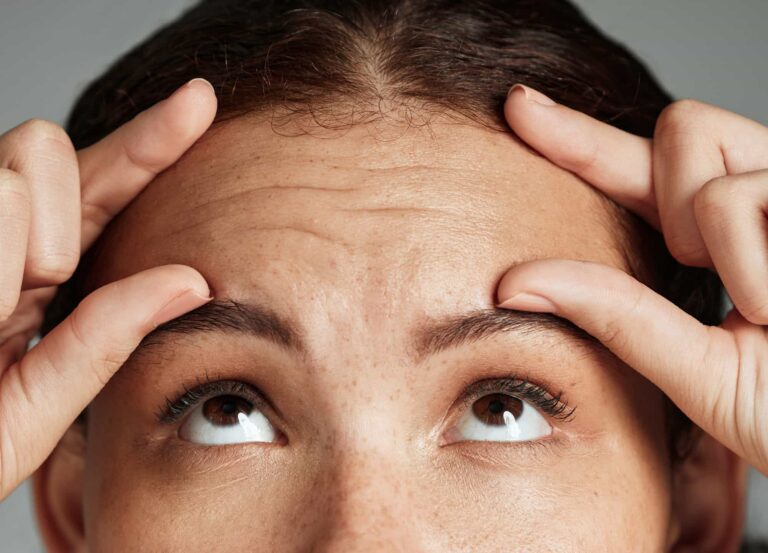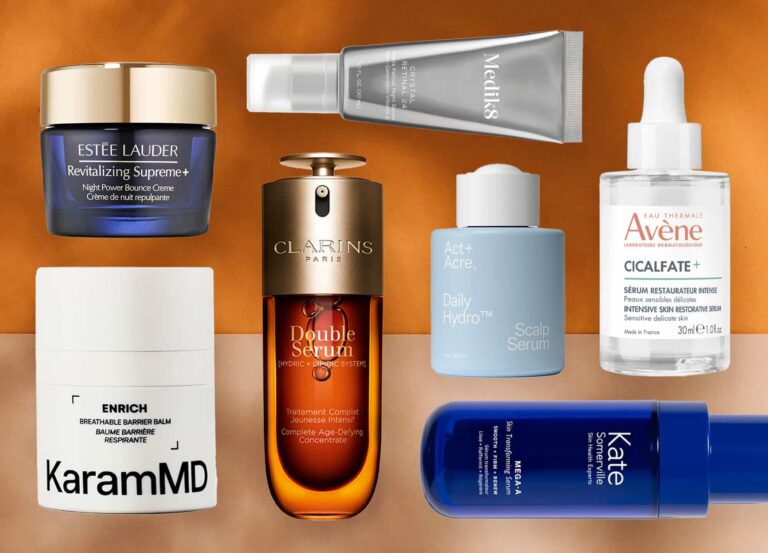Featured Experts
Dr. Carl Truesdale, a double board-certified facial plastic surgeon in Los Angeles
Dr. Renata Khelemsky, a facial plastic surgeon in New York City
Dr. Ramtin Kassir, a triple board-certified facial plastic surgeon in New York City
Age is just a number—and that’s especially true when it comes to your facial features, which can skew how old people think you are. (Case in point: the “babyface” with round cheeks.) And if you’re constantly being mistaken for older than you really are, which could be the work of everything from genetics to long days at the beach, there may be certain attributes to that.
Here’s why: while everyone ages at their own pace, “some of the most common things that make people look older than their actual age are volume loss in the face, signs of aging around the eyes—such as fallen brows and puffy under-eyes—and facial laxity that contributes to jowls,” says Dr. Carl Truesdale, a double board-certified facial plastic surgeon in Los Angeles.
There’s usually not just one thing to blame. Rather, the factors that are making you older are, as with all signs of aging, the result of a combination of genetic, hormonal, and environmental factors. While most people think about their genetics—looking to their parents to see what they’ll look like in a few decades—”hormonal factors, like early menopause, and environmental factors like sun exposure, chronic dehydration, stress, and a poor diet can all play a big role as well,” he says.
With that in mind, here’s what surgeons say are the features that might be aging you—and what you can do about them.
Facial volume loss
Why it’s happening: Volume loss, especially in the temples and the cheeks, can make you look older than you actually are. While everyone loses volume, “volume loss in the temple and cheeks subconsciously reads as skeletal and older,” says Dr. Truesdale. Plus the rest of your face also changes as a result; when you lose volume in the cheeks, you get classic signs of aging like droopy cheeks and fine lines.
While you may simply just lose volume at a fast rate, rapidly losing weight—be it the result of bariatric surgery or a GLP-1 agonist like Ozempic—can also contribute to volume loss in the face.
What you can do about it: The easiest option is to replace the lost volume with, well, more volume. To that end, “dermal fillers or fat transfer can be used to treat volume loss,” says Dr. Truesdale. Both have the advantage of being minimally invasive, coming with little to no downtime, and lasting for months on end. That said, facial implants, like cheek implants, can also be used in certain circumstances, he says—like if you’ve already done fillers and are looking for a permanent solution.
Sagging around the eyes
Why it’s happening: While genetics plays a role in the skin around eyes becoming crepey and hooded, so does wear and tear (like using contact lenses) as well as age, says Dr. Renata Khelemsky, a facial plastic surgeon in New York City.
Even your orbital bone can change, which can have a domino effect on your overall appearance. “The bone around the eye remodels and recedes, leading to less support for both the brow and the eyelid skin and fat,” says Dr. Truesdale. “The bone changes can lead to fallen brows, hooding around the eyes, and fat in the lower eyelid starting becoming more visible.” While genetics is also a big factor here, so too are environmental factors; for instance, smoking can make a significant difference in this regard.
What you can do about it: Your best course of action depends a) on your exact issue and b) how invasive you’re willing to be. If you’re dealing with crepey or sagging skin, Dr. Truesdale recommends rejuvenating the area with lasers that can tighten skin, like an ablative CO2 laser (which is especially effective around the eyes). If you have more severe sagging, then you might want to consider a surgical option like a blepharoplasty or a brow lift; the former actually removes excess skin to address sagging, while a brow lift raises the skin on the forehead, thus lifting that around the eyes.
Preventive measures can also be helpful. For instance, “wearing sunglasses outdoors, using gentle makeup application techniques, and avoiding habits like eye rubbing and sleeping face down” can all help you prevent crepey or hooded upper eyelids from becoming more exaggerated, says Dr. Khelemsky.
A wider nose
Why it’s happening: There are a few different things at play here. For one, just like you lose volume in the cheeks, you also lose it in the nose and the surrounding area. Plus “skin changes, such as thinning and loss of elasticity, can contribute to a more prominent and less defined appearance,” says Dr. Ramtin Kassir, a triple board-certified facial plastic surgeon in New York City. Your hormones get involved too: it’s especially common to notice these shifts during perimenopause, since the drop in estrogen can soften cartilage in the nose, giving it a wider, softer look.
What you can do about it: While most people might think of rhinoplasty as something that is done to change their original nose, you can also use it to restore your original nose once it starts to look a little different. “This procedure can lift a drooping tip, restore volume, and provide better structural support to the nose, creating a more youthful and defined appearance,” Dr. Kassir says.
Drooping jowls
Why it’s happening: Even if you have bright, smooth skin, jowls might still be getting in the way of a youthful look. “As tissues and muscles fall over time in the face and neck, we start to see looseness in the lower face that contributes to the appearance of jowls and a poorly defined jawline,” says Dr. Truesdale. To some extent, it’s just gravity at work.
Making matters worse is a loss of elasticity, or how well skin “bounces” back. This “can be caused by sun damage, where UV radiation degrades the skin’s structural proteins, leading to loss of elasticity and sagging,” says Dr. Kassir. He also points to significant weight loss as a factor, as is your family history—since you might be genetically predisposed to losing skin elasticity.
What you can do about it: “For jowls and the neck, skin-tightening and fat-melting devices can give a modest to acceptable effect, depending on the patient,” says Dr. Truesdale. (In other words, it’s not going to be a dramatic difference.) These usually use ultrasound or radiofrequency to heat up the lower layers of skin, remodeling the collagen and thus tightening the tissue. However, they work best for mild to moderate sagging.
If you have actual jowls, your sagging is probably more severe. For this, you might need to consider more invasive treatments. For a targeted procedure, “mini facelifts focus on lifting the lower face and jawline,” says Dr. Kassir. Depending on your age and the level of sagging though, a deep plane facelift and neck lift might be the best possible option, though it’s also the most drastic. “Reversing fallen tissues and muscles can reverse the hands of time,” says Dr. Truesdale.
Elongated upper lip
Why it’s happening: It might sound more subtle than, say, jowls or heavy-lidded eyes, but a stretched-out upper lip can also make you look as though you’re older than you are. It might just be a matter of your dental and bone structure—especially if you have short upper teeth with a relatively long upper lip—but aging can also play a part in having a long top lip.
What you can do about it: If it’s not very drastic, you can get away with maintaining a more defined, plumper upper lift with a hyaluronic acid–based dermal filler, says Dr. Khelemsky; you might need to keep it up every one to two years, to maintain the result.
Another nonsurgical option, says Dr. Khelemsky, is a lip flip, in which a neuromodulator is injected into the muscle that surrounds the mouth. It “flips” the lips outward in order to emphasize the Cupid’s bow and make it so that your upper lip doesn’t disappear when you smile. Another option she recommends is lip lift surgery, which actually shortens the length of the top lip—so if it’s become elongated, the lift restores it to a length that looks balanced for your face.











